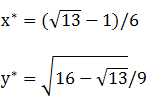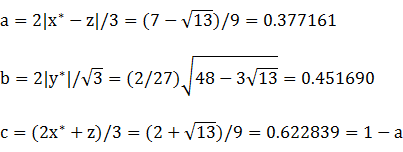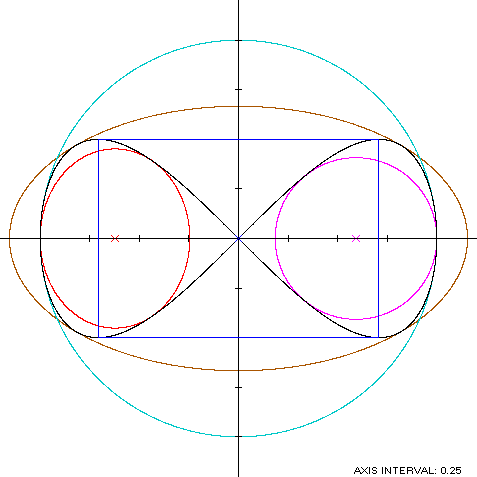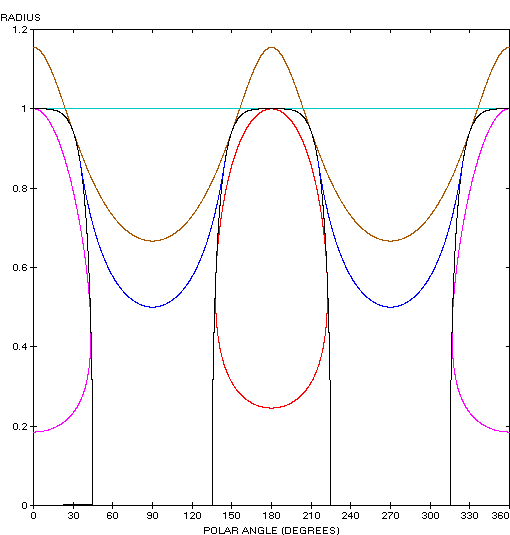Balmoral Software

Balmoral Software

x(t) = sin(t)The path of S starts at the origin, passes clockwise through Quadrants I and IV, then counterclockwise through Quadrants II and III and back to the origin. Its abscissa extrema are on the x-axis at ±1 wheny(t) = sin(2t)/2, 0 ≤ t < 2π
 at
at
 . We have
. We have
x'(t) = cos(t)so by (L1), the perimeter of the convex hull isy'(t) = cos(2t),
which is about 12% shorter than that of the lemniscate.
The line segments of the convex hull create a rectangle of area
 , as shown in blue in the left
diagram below. By (A1), the area of the
convex hull is
, as shown in blue in the left
diagram below. By (A1), the area of the
convex hull is
which is about 41% more than the area of the lemniscate.
x2(t) + y2(t) = sin2(t) + sin2(2t)/4is 1, so that is the circumradius.
x(t)y(t) = sin(t)sin(2t)/2This expression is maximized in the first quadrant at
 so the circumellipse dimensions
are
so the circumellipse dimensions
are
For verification, we have
 is too close to the
right edge (1,0), so its incircle is constrained by the right edge of S. Using
is too close to the
right edge (1,0), so its incircle is constrained by the right edge of S. Using
and R = |c - z| = 11/27. For verification, we have
d/dt [x(t) - z]y(t) = [sin(t) - 1]sin(2t)/2has a zero at
The corresponding coordinates are
We then have
For verification, we have
Figure Parameters Perimeter Area Centroid Incircle (lobe) R = 11/27 2.559816 0.521444 (0.592593,0) Inellipse (lobe) 2.609178 0.535201 (0.622839,0) Lemniscate of Gerono Width: 2
Height: 16.097223 1.333333 Convex hull 5.392483 1.885618 Circumellipse 5.825171 2.418401 Circumcircle R = 1 6.283185 3.141593
 |  |
| Binoculars |
The Lemniscate of Gerono (red) is a member of a group of figure-8 curves described on these pages, including (inside to outside) the dumbbell curve, the bowtie, the Lemniscate of Bernoulli and the dipole:
Copyright © 2021 Balmoral Software (http://www.balmoralsoftware.com). All rights reserved.